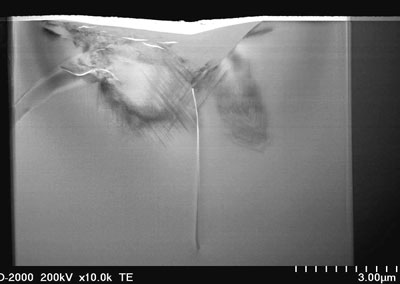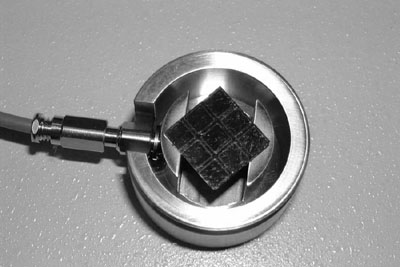
 |
|
 |
|
 |
|
 |
|
 |
|
 |
|
[Information] >Introduction
Introduction
Area : Mechanical Systems Analysis and Solid Mechanics
Subarea : Solid Mechanics
 We research the solid mechanics field where much attention is paid to
the multi-scale modeling and analyses. In order to link the hierarchical
solid mechanics phenomena together, our research field ranges from the
first principle calculation (ab-initio calculations) to get the electronic
states information under the external loading, the mezoscopic simulations
which represent the collective mechanical behavior of defects like the
dislocation and the macroscopic elastic-plastic finite element simulations.
We research the solid mechanics field where much attention is paid to
the multi-scale modeling and analyses. In order to link the hierarchical
solid mechanics phenomena together, our research field ranges from the
first principle calculation (ab-initio calculations) to get the electronic
states information under the external loading, the mezoscopic simulations
which represent the collective mechanical behavior of defects like the
dislocation and the macroscopic elastic-plastic finite element simulations.
 Moreover, we have been put much efforts to perform the noteworthy experiments
and to develop the new experimental technique as well. The former is concerning
the nano-indentation, the in-situ observation of the mechanical testing.
The latter is related to the focus ion beam (FIB) applied technique and
the new scanning electron-induced acoustic microscopy (SEAM).
Moreover, we have been put much efforts to perform the noteworthy experiments
and to develop the new experimental technique as well. The former is concerning
the nano-indentation, the in-situ observation of the mechanical testing.
The latter is related to the focus ion beam (FIB) applied technique and
the new scanning electron-induced acoustic microscopy (SEAM).
 We have also been collaborating to the dentists. Developing the three-dimensional
finite element analyses of the occlusive force and moment balance, our
numerical analysis information is coupled with the dental treatments. We
aim to build up the ideal occlusive master curved surface from the mechanics
standpoint.
We have also been collaborating to the dentists. Developing the three-dimensional
finite element analyses of the occlusive force and moment balance, our
numerical analysis information is coupled with the dental treatments. We
aim to build up the ideal occlusive master curved surface from the mechanics
standpoint.

Fig.1 Dislocation network observation under nano-indentation of
single crystal silicon or aluminum.

Fig.2 The holder putting the sample of a transistor tip.
- (Cellular Automata (CA)+Crystal Plasticity) Combined Scheme,
3-Dimensional CA Discrete Dislocation Method (3D CA-DD), Dislocation
Collective Behavior, Molecular Dynamics (MD)
- Cluster Structure, 0(N) Tight-binding MD (TB-MD), Diamond-Like-Carbon
(DLC), Carbon Nanotube, Ab-initia Calculation
- Scanning Electron Beam-indeed Acoustic Microscopy (SEAM), Dislocation
Network, Non-destructive Observation, Nano-indentation, Silicon, Phase
transition and Dislocation Network
- Occlusion Mechanics, Dental Implant Design, FEM Simulation
 We participate in one of the Handai FRC projects "Concurrent first
principle computational system for structural integrity of nanostructured
materials".
We participate in one of the Handai FRC projects "Concurrent first
principle computational system for structural integrity of nanostructured
materials".
 Improving the first principle calculations for practical multinary compounds and non-periodic structures containing some defects, new computational mechanics system with multiscalability has been developed. It can evaluate the material properties of nanostructured materials and also trace dynamics of mechanical structures assembled on nano-scale. The focus ion beam technology is available to innovate the nanostructures. which should be integrated from the nanoengineering view points by the newly developed concurrent computationalmechanics system.
Improving the first principle calculations for practical multinary compounds and non-periodic structures containing some defects, new computational mechanics system with multiscalability has been developed. It can evaluate the material properties of nanostructured materials and also trace dynamics of mechanical structures assembled on nano-scale. The focus ion beam technology is available to innovate the nanostructures. which should be integrated from the nanoengineering view points by the newly developed concurrent computationalmechanics system.
LINK >>> Project Introduction (PDF 2.04MB)
Project Introduction (PDF 2.04MB)
<Preview


Mechanical Engineering and Systems
Graduate School of Engineering Osaka University
2-1,Yamadaoka, Suita, Osaka, 565-0871, JAPAN
TEL +81(6) 6879-7310 FAX +81(6) 6879-4121